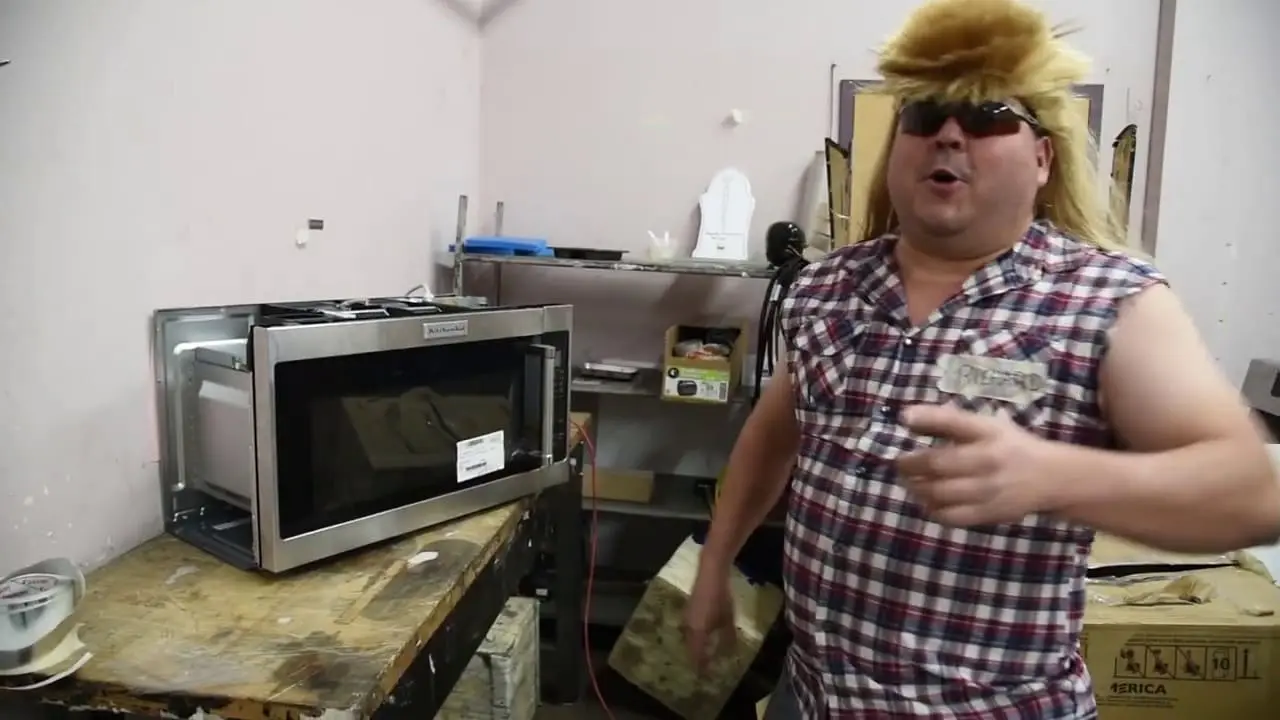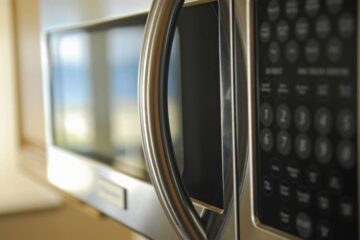Microwaves are an essential appliance in modern kitchens. They provide a quick and convenient way of cooking food, reheating leftovers, and even popping popcorn. However, if you’re looking to repair or replace parts of your microwave, it’s important to understand how to discharge a microwave capacitor safely. A capacitor stores electrical energy and must be discharged before repairs or maintenance to avoid electric shock or damage to the appliance.
In this blog post, we will be discussing the safe and efficient methods of discharging a microwave capacitor. Whether a DIY enthusiast or a professional repair technician, this guide will give you the knowledge and confidence to handle this task safely and effectively. So, buckle up and get ready to learn how to discharge a microwave capacitor like a pro!
How Long Does A Microwave Capacitor Take To Discharge?
Microwave Capacitor Discharge Time:
The time it takes for a microwave capacitor to discharge depends on several factors, including the capacitance value of the capacitor, the resistance of the discharge path, and the voltage of the capacitor. Generally, depending on the specific conditions, it can take anywhere from a few seconds to several minutes for a microwave capacitor to discharge. Some capacitors can discharge in 8 hours.
It’s important to note that a microwave capacitor stores a significant amount of energy and can pose a shock hazard, even after it has been unplugged from the power source. For this reason, following proper safety procedures when working with microwave capacitors is important, including wearing protective equipment and observing all warning labels.
Do You Need To Discharge Microwave Capacitor?
It is generally recommended to discharge the capacitor in a microwave oven before servicing it or working on it to ensure safety. Microwave ovens contain high-voltage capacitors that store electrical energy even after the microwave has been unplugged. Discharging the capacitor will release this stored energy, reducing the risk of electrical shock.
Does Discharging a Capacitor With a Screwdriver Damage It?
Discharging capacitors are often safe to discharge if you do so with a screwdriver. The capacitor can be safely discharged using the screwdriver, but it will still be damaged.
If you use the screwdriver to discharge your capacitor, you can do so without damaging it. It would be best if you took care not to cause any damage to the capacitor while discharging it; otherwise, it will not be able to hold its charge and will have to be replaced.
Symptoms Of A Bad Microwave Capacitor
A bad microwave capacitor can cause a variety of symptoms. Some common symptoms include:
Microwave not heating
If the capacitor fails, it can prevent the microwave from producing heat.
Microwave not starting
If the capacitor is not holding a charge, the microwave may not start when you press the “Start” button.
Sparking or arcing inside the microwave
A bad capacitor can cause sparks or arcs to form inside the microwave, which is a safety hazard.
Loud buzzing or humming sound
A failing capacitor can cause a loud buzzing or humming sound from the microwave.
The microwave shut off suddenly
If the capacitor fails, the microwave may shut off suddenly during use.
How To Discharge A Microwave Capacitor?
A capacitor in a microwave is a high-voltage component that stores electrical energy. It is crucial for the proper functioning of the microwave as it helps produce high voltage for the generation of microwave energy.
However, when a capacitor needs to be replaced or when servicing the microwave, it is necessary to discharge the capacitor as it may contain dangerous levels of voltage that can harm the technician or cause damage to the microwave.
Step 1: Safety precautions
- Make sure to turn off the power supply of the microwave and unplug it before attempting to discharge the capacitor.
- Wear protective gear such as rubber gloves and safety glasses.
- Keep away any metal objects or conductive materials.
Step 2: Locate the capacitor
- Locate the capacitor in the microwave. It is typically found near the high-voltage diode, magnetron, or high-voltage transformer.
Step 3: Discharge the capacitor
- Use a high-voltage discharge tool or a screwdriver with an insulated handle.
- Touch the metal end of the discharge tool to one of the capacitor terminals.
- Touch the metal end of the discharge tool to the other capacitor terminal.
- Repeat this process several times to fully discharge the capacitor.
Step 4: Confirm the discharge
- Use a multimeter to confirm that the capacitor is fully discharged by measuring the voltage across the terminals. The reading should be zero volts.
How To Discharge A Microwave Capacitor With A Multimeter?
The steps on how to discharge a microwave capacitor with a multimeter:
- Turn off the power supply to the microwave.
- Locate the capacitor, a cylindrical object with wires.
- Test the capacitor with a multimeter to ensure it is fully charged. To do this, switch the multimeter to the “capacitance” setting and touch the leads to the capacitor terminals.
- If the multimeter indicates that the capacitor is charged, it must be discharged before handling it.
- Touch one of the multimeters leads to the positive terminal of the capacitor, and the other lead to the negative terminal.
- Observe the multimeter and the capacitor is fully discharged as soon as it indicates zero voltage.
- If the multimeter does not indicate zero voltage, repeat the process until it does.
- Once the capacitor is fully discharged, it is safe to handle and repair.
How To Discharge A Microwave Capacitor With A Screwdriver?
- Unplug the microwave and turn off the power source to ensure no electrical current is flowing through the microwave.
- Wait at least five minutes to allow the capacitor to discharge completely.
- Use a voltage meter to verify that the voltage across the terminals of the capacitor has dropped to 0.
- Put on protective equipment, including gloves and safety glasses.
- Locate the terminals of the capacitor and, using a non-conductive tool such as an insulated screwdriver or pliers, carefully short the terminals together. This will discharge any residual voltage that may still be present in the capacitor.
How To Discharge A High Voltage Microwave Capacitor?
Discharging a high-voltage microwave capacitor can be done by following a few steps. Firstly, please switch off the microwave and unplug it from the power source. Locate the capacitor, which is usually found near the magnetron and will have a series of wires connected to it. Use a screwdriver or other insulated tool to short across the capacitor’s two leads. This will discharge the stored energy in the capacitor and make it safe to work on the microwave. Always be careful when handling high voltage capacitors as they can still hold a dangerous amount of energy even when the microwave is turned off.
- What Is 1 1/2 Minutes On A Microwave? (In-Depth Explanation)
- 5 Minutes In Microwave Is How Long In Oven?
How To Discharge A Microwave Oven Capacitor?
A microwave oven capacitor stores a large amount of electrical energy and must be discharged before servicing the oven. Discharging the capacitor helps to prevent electrical shock and protects you and your equipment. To discharge a microwave oven capacitor, you need to locate the terminals on the capacitor and use an insulated tool such as a screwdriver with an insulated handle.
Touch the screwdriver to both terminals simultaneously and hold them there until you feel no more shock or until you hear a spark. This means that the energy stored in the capacitor has been safely discharged. Before performing any service or maintenance on the microwave oven, always unplug the appliance and discharge the capacitor.
How To Discharge A Microwave Transformer?
To discharge a microwave transformer, you need to locate the high-voltage capacitor and discharge it using a discharge tool or shorting its terminals with an insulated screwdriver. Before discharging the transformer, unplug the microwave and wait a few minutes for the capacitor to discharge completely.
Once the capacitor has been discharged, the transformer is safe to handle. It’s important to discharge a transformer before working on it to avoid electrical shock and to prevent damage to the capacitor and other components of the microwave.
How To Test A Microwave Capacitor?
Testing a microwave capacitor is a relatively simple process that can be done with a multimeter. Here is a step-by-step guide on how to test a microwave capacitor:
Disconnect the power source
Before you begin testing, it is important to disconnect the power source from the microwave to avoid any electrical shock.
Locate the capacitor
The capacitor is usually located near the high-voltage diode and can be identified by its cylindrical shape.
Test the capacitor for continuity
Set your multimeter to the continuity setting and touch one lead to one terminal of the capacitor and the other to the other terminal. If the multimeter beeps, it indicates that the capacitor is not damaged and has continuity.
Test the capacitor for capacitance
Change the setting on your multimeter to measure capacitance. Touch one leads to one terminal of the capacitor, and the other lead to the other terminal. The reading should be close to the rated capacitance of the capacitor, which can usually be found on the capacitor itself or in the microwave’s manual. If the reading is significantly different from the rated capacitance, the capacitor is likely damaged and needs to be replaced.
Test the capacitor for leakage
Set your multimeter to measure resistance (Ω) and touch one lead to one terminal of the capacitor and the other lead to the other terminal. The reading should be close to infinity, indicating no leakage in the capacitor. If the reading is low, it indicates leakage in the capacitor, which needs to be replaced.
Note:
It’s advisable to wear gloves and safety glasses while performing these tests, as capacitors can store a significant amount of electrical energy even after the power source has been disconnected.
How To Test A Microwave Capacitor With A Digital Multimeter?
To test a microwave capacitor with a digital multimeter, you first need to ensure that the microwave is unplugged and completely disassembled to access the capacitor. Then, you need to locate the two leads on the capacitor.
One lead is usually attached to the metal casing, and the other is to a metal tab. Touch the multimeter probes to each lead, selecting the capacitance measurement function on the multimeter. The reading should be close to the value stated on the capacitor or in the microwave’s manual. If the reading is close to zero or not within the expected range, it may indicate that the faulty capacitor needs to be replaced.
How To Test A Microwave Capacitor With A Multimeter?
Testing a microwave capacitor with a multimeter is a relatively straightforward process. First, ensure the microwave is unplugged, and the capacitor is discharged by pressing the “Start” button for at least 30 seconds. Then, set the multimeter to measure capacitance and touch the probes to the leads of the capacitor.
The reading on the multimeter should match the value printed on the capacitor. If the reading is significantly lower, it could indicate a faulty capacitor that needs to be replaced. To be extra cautious, you can wear rubber gloves and use insulated tools when testing the capacitor, as it can store a high electrical charge even when the microwave is unplugged.
What Happens If You Touch A Microwave Capacitor?
Touching a microwave capacitor can be dangerous and potentially deadly. Microwave ovens contain high-voltage capacitors that store electrical energy even after the power to the oven has been disconnected. The capacitors can hold a dangerous electrical charge for a long time, even days or weeks, after the oven has been unplugged. Suppose you touch the terminals of a charged capacitor. In that case, you can receive a severe electrical shock that can cause serious injury or death.
Additionally, some capacitors used in microwave ovens can store enough energy to cause a spark or arc, which can ignite flammable materials and cause a fire. For this reason, it is important to take appropriate safety precautions when working with microwave ovens and only handle the high-voltage components of the oven if you have the necessary training and equipment.
Generally, it’s best to avoid touching the capacitors in a microwave oven and to have the oven serviced by a professional.
What Happens If You Don’t Discharge A Capacitor?
If you don’t discharge a capacitor, it can retain a charge even after disconnecting the power source. This can be dangerous because capacitors store electrical energy and release it suddenly, potentially causing injury or damage to equipment. In some cases, not discharging a capacitor can also damage the capacitor itself, reducing its performance or shortening its lifespan.
Overall Thoughts
In conclusion, discharging a microwave capacitor can be hazardous if not done properly. Following the correct safety measures and procedures is essential to avoid any potential electrical shock or injury. Before attempting to discharge a capacitor, unplug the microwave and wait for at least 5 minutes to allow the capacitor to cool down. Use a screwdriver or a capacitor discharge tool to discharge the capacitor by touching the screwdriver to both terminals.
Lastly, always exercise caution and seek professional assistance if in doubt. Discharging a microwave capacitor may seem daunting, but with the right knowledge and tools, it can be a relatively simple and safe process.
Frequently Asked Questions
Can I Discharge A Capacitor With A Multimeter?
You can discharge a capacitor using a multimeter set to its resistance (Ohms) measurement function. Before doing so, follow proper safety precautions, as capacitors can store dangerous levels of electrical energy.
Will A Microwave Capacitor Discharge On Its Own?
No, a microwave capacitor will not discharge on its own. It requires a discharge circuit or sparks to release the stored energy.
Can A Microwave Capacitor Kill You?
No, a microwave capacitor alone cannot kill you. However, if a microwave is damaged and the capacitor discharges, it could cause a shock that could be fatal.
How Long Do Microwave Capacitors Hold Charge?
Microwave capacitors can hold a charge indefinitely as long as they are not drained or discharged. However, the charge may naturally dissipate after a long period due to internal resistance.



